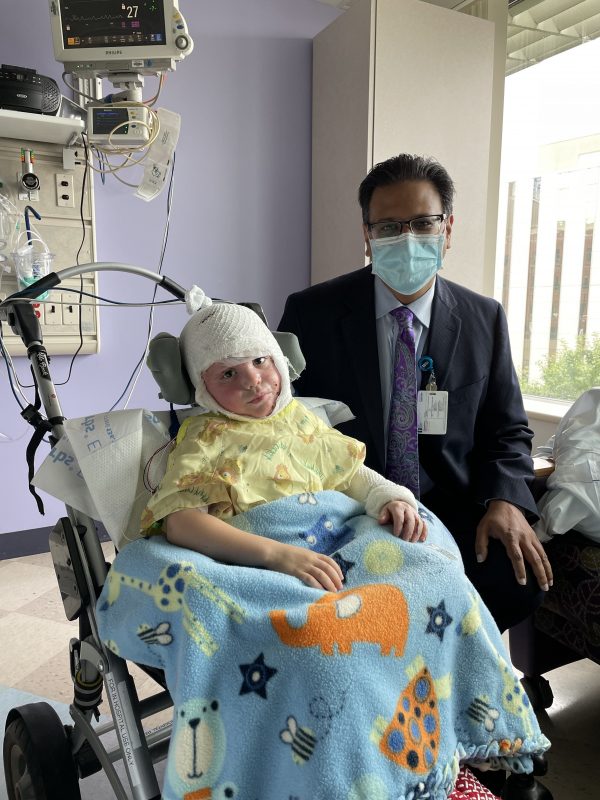Burns are one of the most painful injuries to treat and require specialized treatment in a center, such as Akron Children’s Paul and Carol David Foundation Burn Institute.
Akron Children’s researchers discovered a method for growing human skin in a laboratory in 1974, and that commitment to offering patients state-of-the-art burn care continues nearly five decades later.
For example, Dr. Anjay Khandelwal, medical director of the burn center, calls the new technology he has been using a “game changer” in treating his patients.
He recently used the RECELL® System on a young boy that greatly reduced the amount of skin grafting needed, allowing him to go home a week, and possibly two weeks, ahead of schedule.
RECELL, by AVITA Medical, Inc., was recently approved by the FDA for expanded use to pediatric patients as young as one month of age.
“Skin grafting, which is currently the standard of care used to treat many pediatric burns, is painful, results in an additional wound, can be disfiguring, and may result in additional complications as a child grows,” said Dr. Khandelwal.
Using the RECELL System, Dr. Khandelwal collects cells from a small sample of his patient’s own skin to create a suspension of Spray-On Skin™ cells necessary to regenerate the outer layer of skin. The system can prepare enough cells to treat a wound up to 80 times the size of the donor skin sample. This would be akin to using a sample the size of a credit card to treat a wound that covers an adult patient’s entire back.
Prepared at the point of care in as little as 30 minutes, a small section of skin – thinner than a sheet of paper – is essentially turned into a spray that can be applied directly on a second degree burn or with an expanded skin graft on a third degree burn, allowing for broad and even distribution of live cells to facilitate healing. Typically, skin heals quicker on the edges of a cut or burn, making the areas in the middle of large and deep wounds slower to heal and more prone to infection.
RECELL recently proved to be a huge asset in treating 4-year-old Jason Zimmerman, who suffered third degree burns to about 25 percent of his body as the result of a lawnmower fire.

Using the new RECELL burn treatment system, Dr. Anjay Khandelwal was able to treat 4-year-old Jason Zimmerman with less skin grafting and much less time in the hospital.
Jason was near his mother, who was filling up the family’s lawnmower, when a nozzle popped off. The gas sprayed onto something hot on the mower and it flared up.
Jason’s parents quickly removed his burning shirt and got him into the house to apply cool water. They took him to a local hospital, and, from there, he was transported to Akron Children’s with burns to his torso, arms, and legs.
Jason did undergo some skin grafting but using RECELL helped reduced the amount of donor skin needed and allowed Dr. Khandelwal to avoid grafting on his face.
“Instead, of taking skin from another part of his body, removing the burned skin and grafting the new skin on Jason’s face, we were able to spray his skin, and his face healed well except for a small area on his neck,” said Dr. Khandelwal. “That saves a lot of skin grafting and saves a lot of donor sites, which means a lot less pain, and a lot less time in the hospital. In addition, there is always a significant cosmetic and functional concern with facial skin grafts, and patients often have to be intubated.”
Dr. Khandelwal said it’s a good time for research in burn care, particularly in the areas of skin regeneration and skin substitutes.
“If you compare patients even 10 years ago to today, we are needing fewer surgeries and that translates into a lot less pain and dressing changes,” he said. “That’s a cost advantage for hospitals and society too.”

The RECELL system was recently approved by the FDA for use in children as young as one month of age.
While Jason was in the burn center, he had a few happy moments, such as visits to his room by Akron Children’s Doggie Brigade and a therapeutic miniature pony named Willie Nelson. But nothing could not compare to the joy of returning home and once again getting to play outside with his brothers and sisters.










